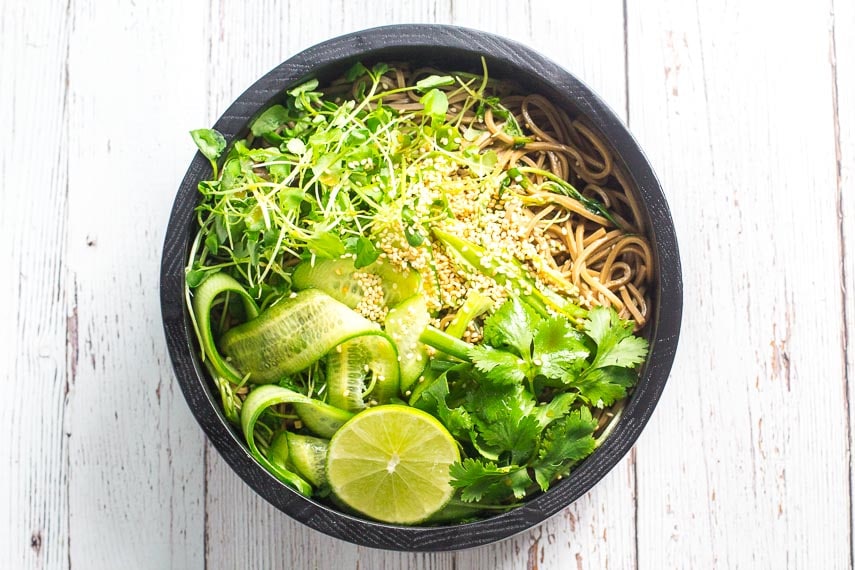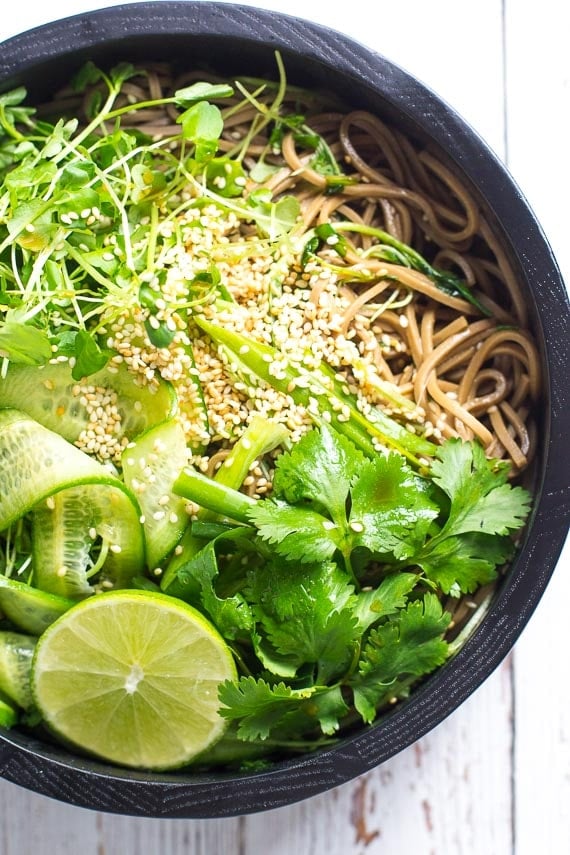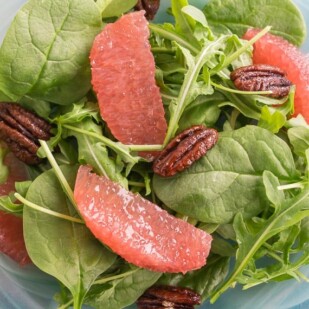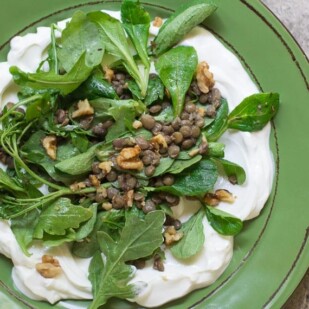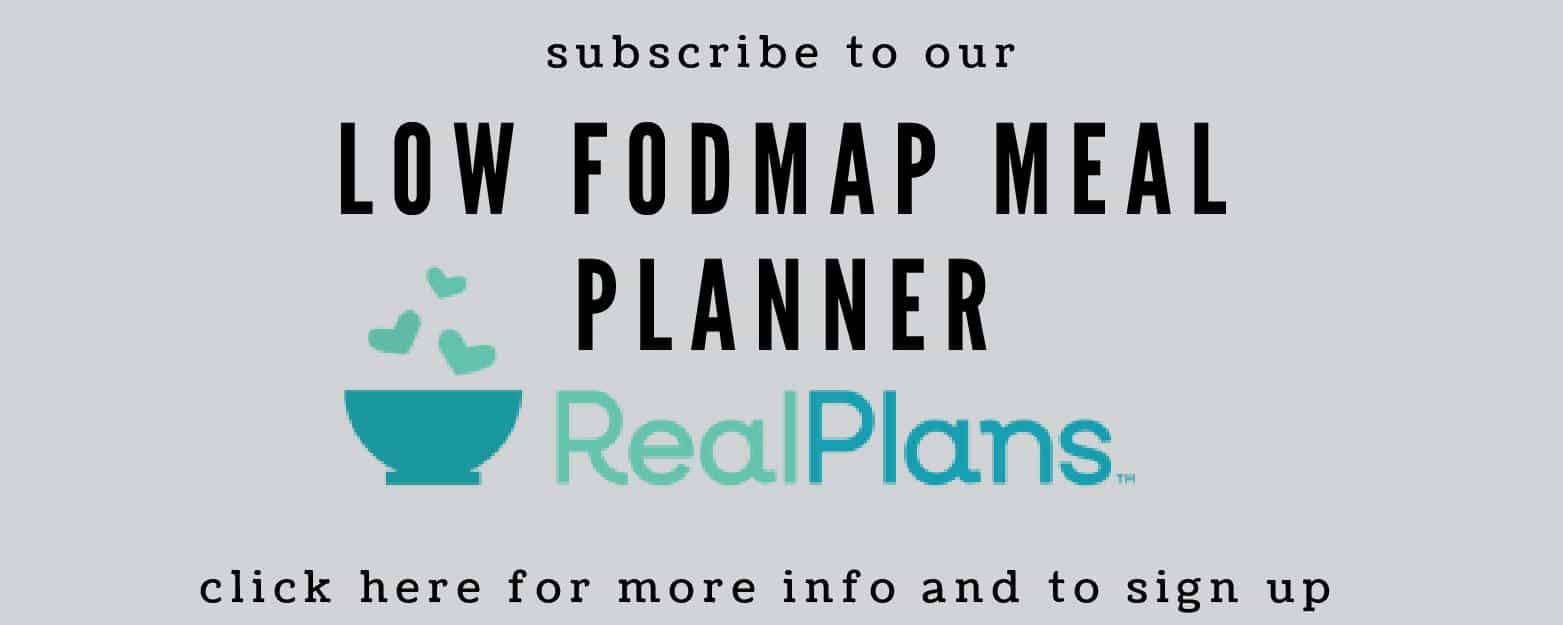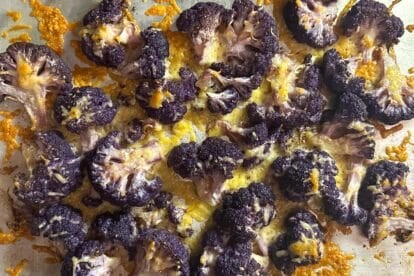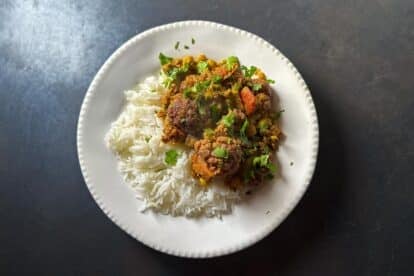This Low FODMAP Cold Soba Salad with Greens is a lovely lunch or dinner on a hot day. Soba do have a low FODMAP serving size, as do many kinds of pasta. You can read more in our article, All About Asian Noodles & FODMAPs.
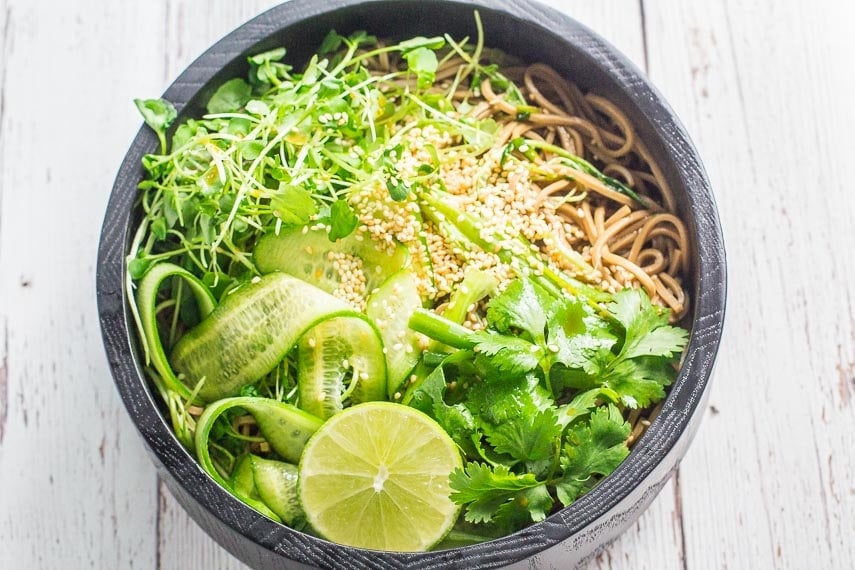
Soba: Hot & Cold
Soba noodles are made with both wheat flour, which contains gluten, and buckwheat flour, which is gluten-free. The low FODMAP diet is not a gluten-free diet and neither is this recipe. If you are eating gluten-free, please look to our other GF pasta and noodle recipes.
We have recipes featuring soba hot, such as our Low FODMAP Miso Soba Soup, and cold, such as this recipe as well as our Cold Soba Soup with Watercress and Radishes.
Inspiration Strikes
Alison Roman’s recipes speak to me. She was a Contributing Editor for Bon Appetit magazine, as was I. Our paths never crossed, but our taste buds are aligned! Our Low FODMAP Cold Soba Salad was inspired by a version she presented in her book, Dining In, which I highly recommend. It isn’t a “chef-y” book; it is a very down to earth book on enjoying food.
Ingredients for Low FODMAP Cold Soba Salad with Greens
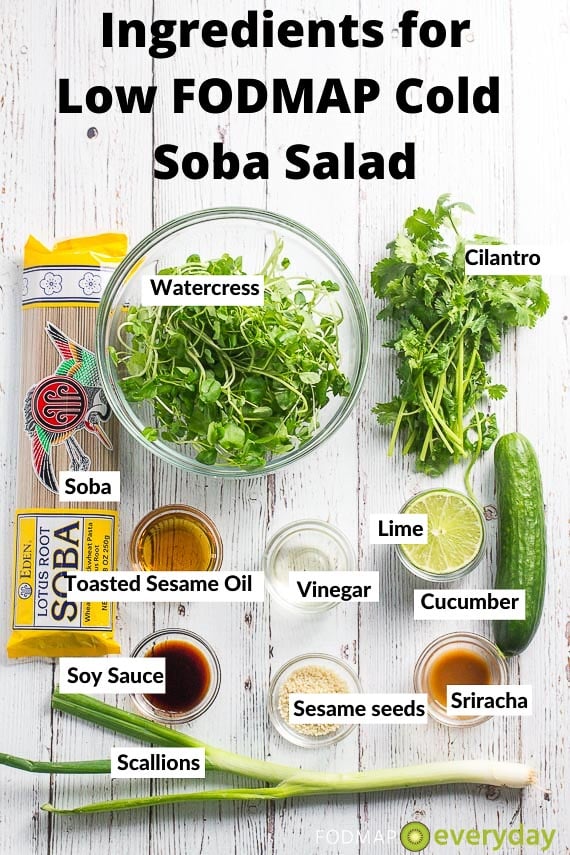
How To Make Low FODMAP Cold Soba Salad with Greens
Once your soba are cooked, this recipe is really about assembly.
You whisk together the soy sauce, toasted sesame oil, rice vinegar and Sriracha, toss in the soba, and half of the watercress, scallions and cucumber. Then this mixture is piled into bowls and garnished with the remaining ingredients.
Don’t forget to squeeze fresh lime over all before diving in.
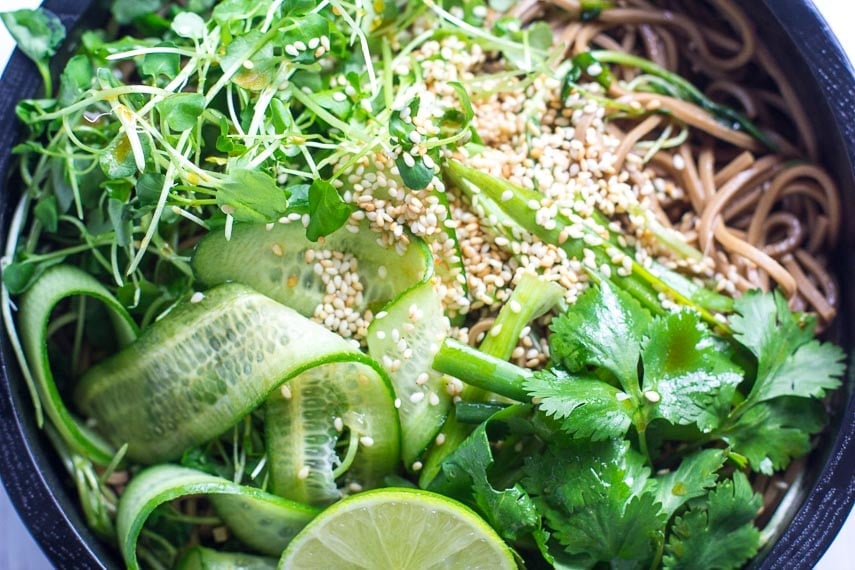
FODMAP Information
All recipes are based upon Monash University & FODMAP Friendly science at time of initial publication.
- Cucumbers: Both Monash University and FODMAP Friendly have lab tested cucumbers. FODMAP Friendly had given them a “Pass” at ½ cup (64 g). Initial Monash app entries stated that no FODMAPs were detected upon lab testing and set a serving size at ½ cup (75 g). Upon re-testing, both testing bodies altered their app entries to represent amounts of fructose in the cucumbers tested at that time. Cucumbers can contain no FODMAPs or can contain a high FODMAP amount of fructose. Eat to your tolerance.
- Lime Juice: Monash University has lab tested lime juice and it is low FODMAP in 1 cup (250 g) amounts (double that of lemon juice, as an interesting fact).
- Oil: All pure oils are fats and contain no carbohydrates, therefore they contain no FODMAPs.
- Scallions: Monash University lab testing found no FODMAPs detected in scallion greens; in subsequent tests, scallion greens showed fructose content. The suggested serving size is 75 g. FODMAP Friendly has also lab tested scallions: their recommended serving size for the green parts is 16 g, with a max low FODMAP serving of 176 g (up from 161 g previously). Both have also tested the bulb; FODMAP Friendly says it is low FODMAP in 19 g portions, which is about 2 tablespoons finely chopped. Monash lab tests say 32 g, which is about ⅓ cup.
- Sesame Seeds: Monash University has lab tested white sesame seeds and they are low FODMAP in 1 tablespoon (11 g) portions.
Please always refer to the Monash University & FODMAP Friendly smartphone apps for the most up-to-date lab tested information. Foods will be retested from time to time; in the case of raw ingredients, such as fruits and vegetables, results may vary. All lab tested results are valid and represent a snapshot in time. As always, your tolerance is what counts; please eat accordingly. The ultimate goal of the low FODMAP diet is to eat as broadly as possible, without triggering symptoms, for the healthiest microbiome.
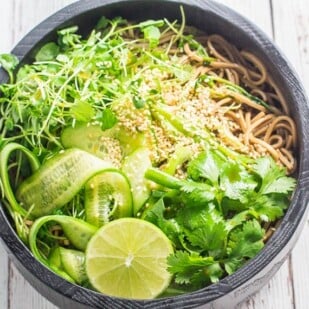
Low FODMAP Cold Soba Salad with Greens
This Low FODMAP Cold Soba Salad with Greens is a lovely lunch or dinner on a hot day. Soba are low FODMAP, as are many kinds of pasta. You can read more in our article, All About Asian Noodles & FODMAPs.
Ingredients:
- 4- ounces (115 g) soba noodles
- Kosher salt
- 2 tablespoons low-sodium gluten-free soy sauce
- 1 tablespoon toasted sesame oil
- 1 tablespoon rice vinegar
- ¼ teaspoon Sriracha
- 1 cup (160 g) watercress, divided
- 3 scallions, green parts only, cut into long strips, divided
- 1 Persian cucumber, ends trimmed, cucumber cut into long, thin ribbons
- 1/3 cup (10 g) cilantro leaves
- 1 tablespoon toasted white sesame seeds
- 2 limes, cut in half crosswise
Preparation:
-
Bring a large pot of salted water to a boil over high heat and cook the soba noodles until al dente. Drain and rinse with cold water; set aside.
-
Whisk together the soy sauce, sesame oil, rice vinegar and Sriracha together in a non-reactive bowl. Toss in the soba then gently fold in half of the watercress, scallions and cucumber to coat. Divide into 4 bowls.
-
Garnish each bowl with remaining watercress, scallions, cucumber and the cilantro, sesame seeds and half a lime for each bowl. Serve immediately and encourage diners to squeeze the lime over the salad before eating.
Notes:
Tips
FODMAP Information
Our recipes are based on Monash University and FODMAP Friendly science.
- Cucumbers: Both Monash University and FODMAP Friendly have lab tested cucumbers. FODMAP Friendly gives them a “Pass” at ½ cup (64 g).Monash states that no FODMAPs were detected upon lab testing and set a serving size at ½ cup (75 g).
- Lime Juice: Monash University has lab tested lime juice and it is low FODMAP in 1 cup (250 g) amounts (double that of lemon juice, as an interesting fact).
- Scallions: The green parts of scallions are low FODMAP as determined by Monash University lab testing and can be used to add onion flavor to your low FODMAP cooking.
- Watercress: Monash has lab tested watercress and it is low FODMAP in portions of 1 cup (80 g). No Moderate or High FODMAP levels are given.
Please always refer to the Monash University & FODMAP Friendly smartphone apps for the most up-to-date lab tested information. As always, your tolerance is what counts; please eat accordingly. The ultimate goal of the low FODMAP diet is to eat as broadly as possible, without triggering symptoms, for the healthiest microbiome.
Nutrition
All nutritional information is based on third-party calculations and should be considered estimates. Actual nutritional content will vary with brands used, measuring methods, portion sizes and more. For a more detailed explanation, please read our article Understanding The Nutrition Panel Within Our Recipes.
